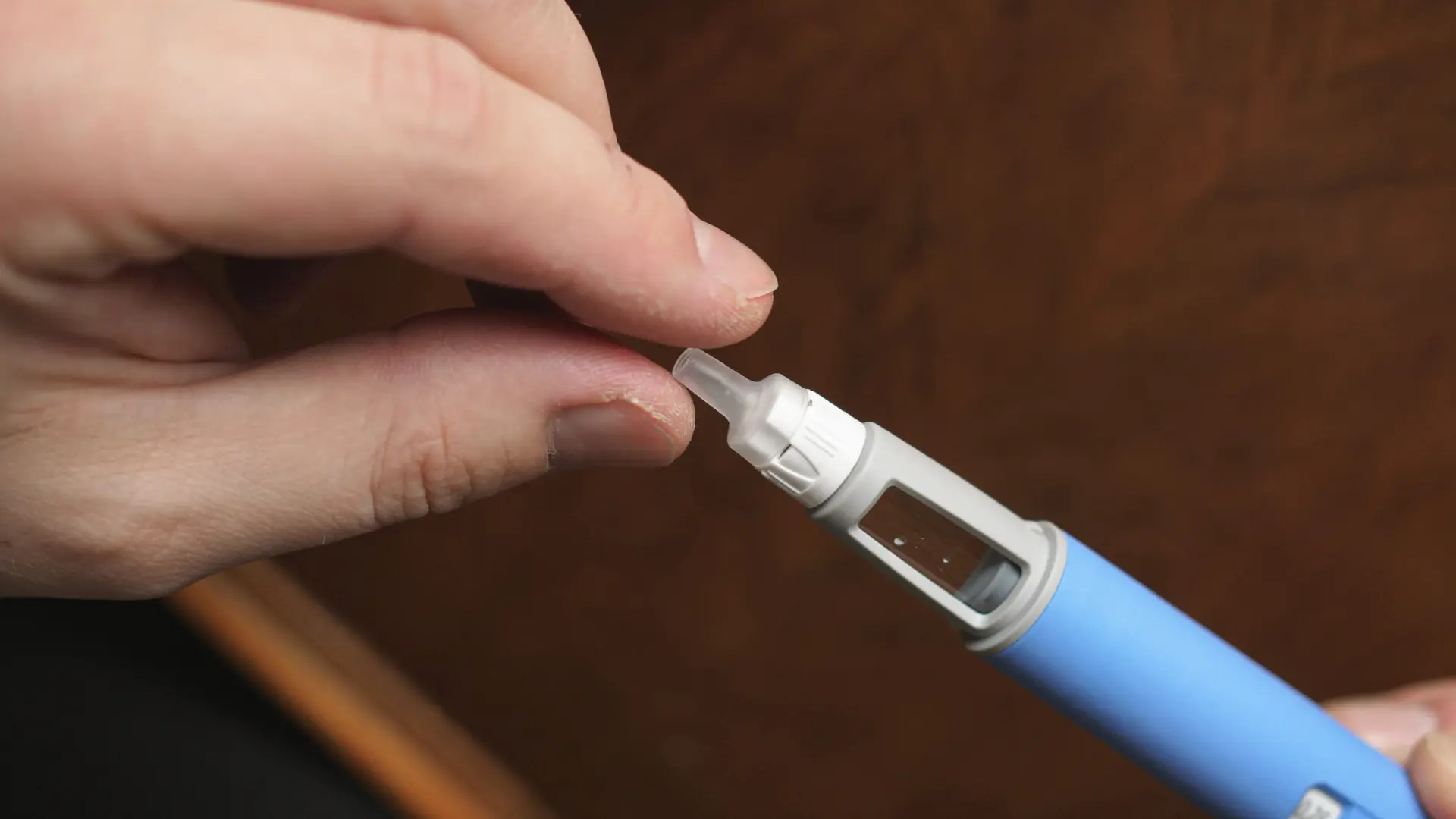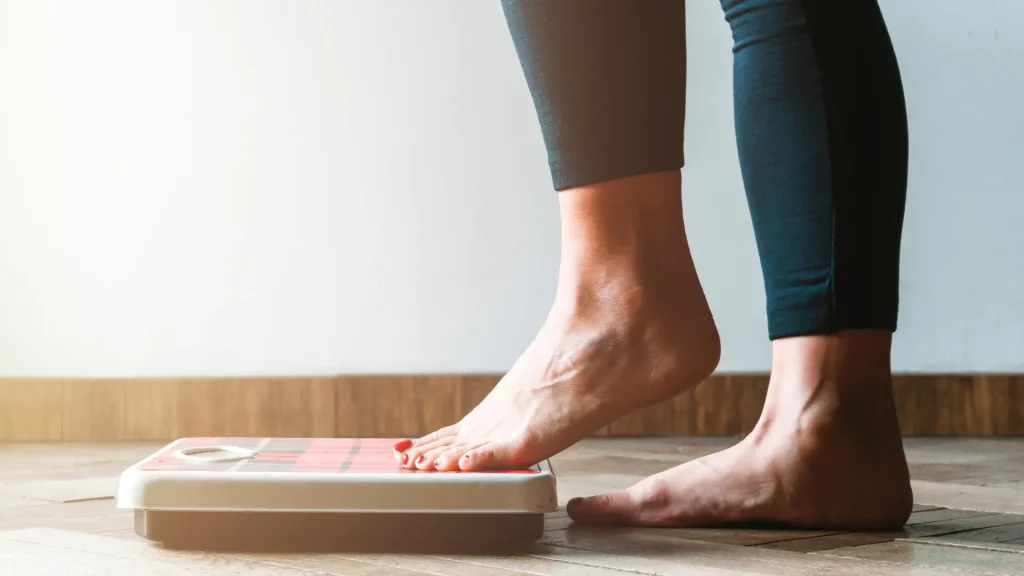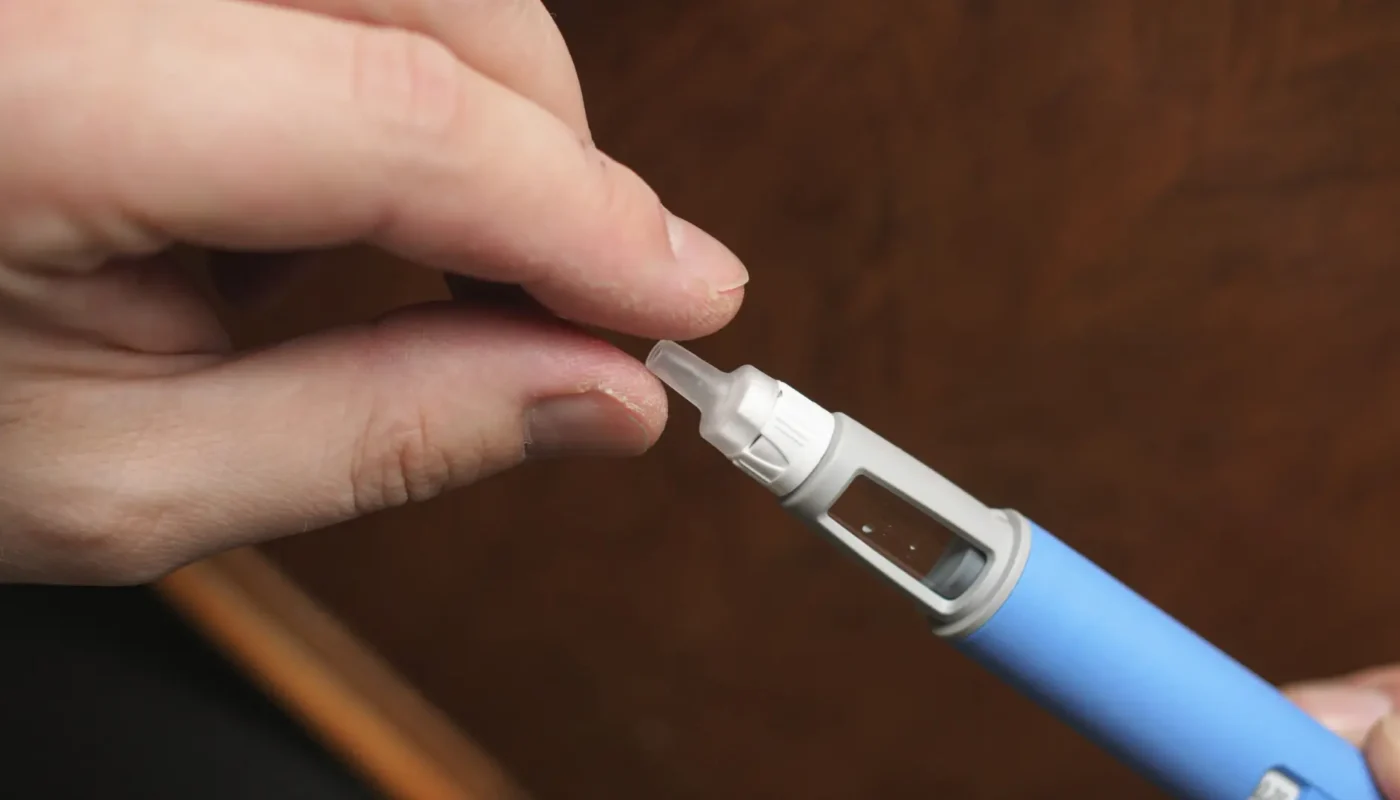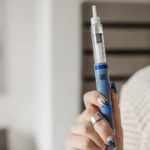
A randomized controlled trial has underscored the effectiveness of 3.0 mg liraglutide in reducing body weight. The study highlighted that liraglutide, diet, and exercise demonstrated significant weight loss for overweight or obese individuals. This evidence emphasizes liraglutide as a safe and effective option in the battle against weight loss management.
Many brands have capitalized on the power of liraglutide to tackle concerns related to weight and diabetes. For individuals exploring injectable brands, Saxenda emerges as a tight competition. Saxenda’s active ingredient, liraglutide, has yielded comparable weight loss results, offering a viable option for effective weight management solutions.
This article will delve into semaglutide and liraglutide injections, Saxenda ingredients, their mechanisms of action, and how they aid in weight loss management.
Key Takeaways
- Liraglutide plays a crucial role in weight loss management. The appetite hormone leaves individuals feeling full, leading to decreased calorie intake.
- However, it’s worth noting that Saxenda alternatives use a different GLP-1 receptor agonist — semaglutide.
- The other Saxenda ingredients mainly help maintain the stability and sterility of the injectable’s formulation.
- A meta-analysis of controlled trials revealed semaglutide’s effectiveness as a weight loss management solution.
- Patients must expect common Saxenda side effects after the treatment, but they may resolve within a few days or weeks.
- While considering these selection criteria, it’s still best to consult your trusted healthcare provider to know if this treatment suits your concerns.
About: Medica Depot is your trusted all-in-one supplier, offering a range of high-quality medical injectables and supplies. If you’re looking to buy Saxenda wholesale, our dedicated sales agents can give you proper guidance. We offer a worry-free experience in searching for the best and most popular products on the market. Whether for health professionals, plastic surgeons, dermatologists, licensed estheticians, or other specialists, we can offer genuine, brand-name products you may need. With Medica Depot, we prioritize serving you better to improve the patient’s quality of life.
What Is Liraglutide?
Liraglutide is under a class of glucagon-like peptide-1 (GLP-1) receptor agonists. The medical field uses this medication for the treatment of type 2 diabetes and weight loss management. Numerous prescription injectables utilize the potency of liraglutide to address weight-related concerns of individuals.
It has a specific mechanism of action that mimics the natural appetite hormone GLP-1. When injected, semaglutide leaves individuals feeling full and helps stimulate insulin secretion, leading to weight loss and controlled blood sugar levels.
Liraglutide plays a crucial role in weight loss management. The appetite hormone leaves individuals feeling full, leading to decreased calorie intake. Moreover, it can also increase energy and promote fat burning, reducing body weight.
The Formulation of Saxenda

It’s worth noting that Saxenda uses the GLP-1 receptor agonist liraglutide. However, Saxenda alternatives like Ozempic and Wegovy utilize a different GLP-1 receptor agonist — semaglutide as its active ingredient. Like liraglutide, semaglutide has a similar mechanism of action when injected and used for weight loss management.
These glucagon-like peptide-1 (GLP-1) receptor agonists can help regulate appetite and blood glucose levels. Saxenda injections capitalize on liraglutide as its active ingredient to help individuals seek solutions for their weight-related concerns.
In addition, Saxenda has various inactive ingredients to complete the injectable. These Saxenda ingredients mainly help maintain the stability and sterility of the injectable’s formulation.
- Disodium Phosphate Dihydrate (1.42 mg) is a buffering agent in pharmaceutical formulations. It helps maintain the medication’s pH level.
- Propylene Glycol (14 mg): This drug solubilizer is typically used in injectable medications.
- Phenol (5.5 mg): This antiseptic and disinfectant is usually used as an oral analgesic or anesthetic in products.
- Water for Injection: This delivers the drugs intravenously and as a fluid replenisher after an appropriate solute.
A thorough consultation with a provider can help individuals understand the treatment. Medical professionals must thoroughly discuss who can receive Saxenda injections. Understanding these safety considerations can equip individuals with patient knowledge and allow them to make informed treatment decisions. Individuals should not receive Saxenda injections if:
- They or any of their family have ever had medullary thyroid carcinoma (MTC), or if you have multiple endocrine neoplasia syndrome type 2 (MEN 2)
- They have had a severe allergic reaction to liraglutide or any of the ingredients in Saxenda.
- They are pregnant or plan to become pregnant.
Efficacy of Liraglutide and Semaglutide in Weight Management

Many individuals share their semaglutide and Saxenda weight loss before-and-after experiences online; however, medical experts’ clinical research may also help garner trust from individuals.
According to a systematic review by Anam et al. (2022), most oral and subcutaneous semaglutide studies exhibited positive outcomes in addressing obesity. The results show immense favorability with the drug in the treatment of this weight-related concern despite its few gastrointestinal-related disorders.
A randomized clinical trial revealed that among overweight and obese participants with type 2 diabetes, subcutaneous liraglutide daily resulted in weight loss over 56 weeks compared to placebo. Meanwhile, another clinical trial involving Saxenda’s liraglutide and Wegovy’s semaglutide showed that the latter had lost more significant weight than Saxenda.
Another meta-analysis systematic review highlights that GLP-1 receptor agonists (semaglutide and liraglutide) are more effective than placebo in obese or overweight individuals. Semaglutide has more advantages in weight loss than liraglutide, but both may cause adverse events.
Potential Side Effects of Semaglutide and Saxenda
The potential side effects of semaglutide may typically last for a few days or weeks. However, it’s worth noting that patients must require a doctor’s visit when these persist to adequately control the symptoms.
- Belching
- Bloated, full feeling
- Excess air or gas in the stomach or intestines
- Gaseous stomach pain
- Heartburn
- Passing gas
- Recurrent fever
- Stomach discomfort, fullness, or pain
- Yellow eyes or skin
Meanwhile, Saxenda injections are generally safe, specifically when strictly following the doctor’s prescription. However, patients must expect common Saxenda side effects after the treatment. These are temporary and may resolve independently in a few days or weeks. However, if these persist, patients must seek immediate medical attention.
- Nausea
- Diarrhea
- Constipation
- Vomiting
- Injection site reaction
- Low blood sugar (hypoglycemia)
- Headache
- Upset stomach (dyspepsia)
- Tiredness (fatigue)
- Dizziness
- Stomach pain
- Change in enzyme (lipase) levels in your blood
Furthermore, rare but severe adverse reactions may occur in patients after semaglutide treatment. It’s essential to recognize the symptoms of these side effects and call for medical attention for proper management. These include:
- Burning feeling in the chest or stomach
- Indigestion
- Stomach upset
- Tenderness in the stomach area
Whether for Saxenda or semaglutide injections, a thorough consultation with a medical professional is required before treatment. They can explain the long-term treatment process, benefits, potential risks, and what to do with individuals planning Saxenda stopping or restarting treatments. Several patient considerations and monitoring before and after treatment may include:
- Medical History, Current Medication
- Weight-Related Concerns, Body Weight
- History of Diabetes, Glycemic Control
- Patient considerations and monitoring
Utilizing Saxenda in Weight Management


Saxenda provided a specific list of recommendations for those who wanted to try Saxenda for their weight loss management. While considering these selection criteria, it’s still best to consult your trusted healthcare provider to know if this treatment suits your concerns.
Adult patients with an initial body mass index (BMI) of the following can receive Saxenda injections.
- 30 kg/m² or greater (obese), or
- 27 kg/m² or greater (overweight) in the presence of at least one weight-related comorbid condition
Saxenda also has indications for pediatric patients. However, providers must strictly follow these patient selection criteria to ensure safety and effectiveness. Pediatric patients aged 12 years and older with:
- body weight above 60 kg and
- an initial BMI corresponding to 30 kg/m² for adults (obese) by international cut-offs
Semaglutide and liraglutide medications like Saxenda differ in the frequency of their injections. Semaglutide requires a once-a-week injection, while Saxenda’s dosing schedule is a once-daily shot. The initial dosage begins at 0.6 mg and increases by 0.6 mg weekly until the target of 3 mg daily is achieved.
The proper injection is subcutaneously in the abdomen, thigh, or upper arm. Moreover, patients must schedule a four-month follow-up with their healthcare providers for questions about dosing or side effects. The evaluation of these providers can determine the effectiveness of Saxenda injections.
Additionally, regular follow-up appointments and continuous monitoring are crucial for optimizing the balance between therapeutic benefits and side effect management of Saxenda or semaglutide injections.
Conclusion
Liraglutide is an active ingredient in Saxendainjections and a potent medication for weight management and diabetes treatment. It belongs to the GLP-1 receptor agonist class of drugs, which work by mimicking the natural hormone GLP-1, regulating appetite. The formulation of Saxenda includes other inactive ingredients that contribute to the stability and sterility of the medication.
It’s worth noting that Saxenda alternatives utilize semaglutide, which also works similarly to liraglutide. Moreover, clinical studies have shown the efficacy of Semaglutide and Saxenda in weight management. When utilized using a doctor’s prescription with proper patient selection, Saxenda can be a valuable tool in weight loss management.
FAQs
1. What is Liraglutide, and how does it relate to Saxenda?
Liraglutide is a medication used for weight loss management. It is a GLP-1 receptor agonist and the active ingredient in Saxenda, a prescription injectable for weight-related concerns.
2. What are the key benefits of Semaglutide and Saxenda in weight management?
Semaglutide and Saxenda help individuals feel full, decrease calorie intake, increase energy, and burn fat, resulting in weight reduction and controlled blood sugar levels.
3. What are some important safety considerations for individuals considering Saxenda injections?
It’s essential to consult with a medical provider before starting Saxenda injections, especially if there is a history of certain medical conditions, severe allergic reactions, or pregnancy.
References
- Pi-Sunyer, X., Astrup, A., Fujioka, K., Greenway, F., Halpern, A., Krempf, M., Lau, D. C. W., le Roux, C. W., Violante Ortiz, R., Jensen, C. B., & Wilding, J. P. H. (2015). A Randomized, Controlled Trial of 3.0 mg of Liraglutide in Weight Management. New England Journal of Medicine, 373(1), 11–22. https://doi.org/10.1056/nejmoa1411892
- Saxenda® liraglutide injection 3mg. (n.d.). Www.novo-Pi.com. Retrieved June 10, 2024, from https://www.novo-pi.com/saxenda.pdf
- Xie, Z., Yang, S., Deng, W., Li, J., & Chen, J. (2022). Efficacy and Safety of Liraglutide and Semaglutide on Weight Loss in People with Obesity or Overweight: A Systematic Review. Clinical epidemiology, 14, 1463–1476. https://doi.org/10.2147/CLEP.S391819
Clinical aesthetics products refer to a category of products used in the field of medical aesthetics or cosmetic dermatology. These products are typically designed and formulated to be used under the supervision of healthcare professionals, such as dermatologists, plastic surgeons, or trained aestheticians. They are distinct from over-the-counter cosmetics in that they often contain active ingredients or formulations that require expertise in their application or administration.
Examples of clinical aesthetics products include:
-
Dermal Fillers: Injectable substances used to add volume, smooth wrinkles, and enhance facial contours. Examples include hyaluronic acid fillers like Juvederm and Restylane.
-
Botulinum Toxin (Botox): Injectables that temporarily paralyze facial muscles to reduce the appearance of wrinkles caused by repetitive movements, such as frown lines and crow's feet.
-
Chemical Peels: Solutions applied to the skin to exfoliate and improve its texture. They can treat acne, pigmentation issues, and signs of aging.
-
Laser and Light Therapies: Devices that emit focused light or laser energy to treat various skin conditions, including acne, scars, and signs of aging.
-
Prescription Skincare Products: Formulations containing active ingredients like retinoids (vitamin A derivatives), hydroquinone, or prescription-strength antioxidants to address specific skin concerns under medical supervision.






